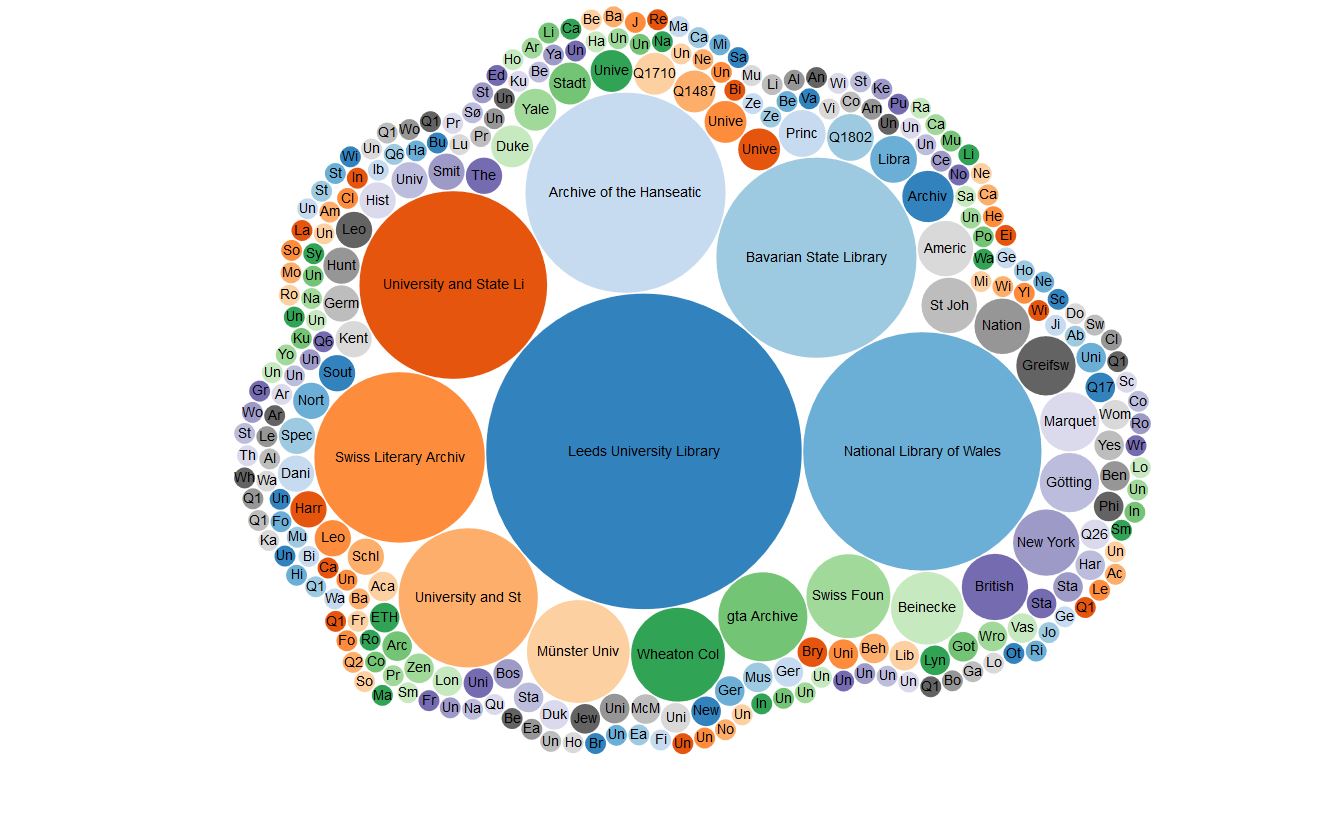Oral history at the Computer History Museum
The mission statement of the Computer History Museum is “to preserve and present for posterity the artifacts and stories of the Information Age.”
The CHM has conducted hundreds of oral history interviews, transcribed them, and made them available from their website. This set of oral histories is very rich with information and I imagine that many people interested in the history of computing might like to read the transcripts of these oral histories.
I was curious to see what data about the people who have oral histories at the CHM might be in Wikidata. You might recognize this bubble chart from my post on 11/11/2016. Well there is a new bubble on the chart now!

I found many of the people who contributed oral histories to the CHM in Wikidata. For those who already had items in Wikidata, I added a link to the transcript of their oral history. Now we can ask questions about these people as a group.
Using the Wikidata Query Service, I wrote a few SPARQL queries to find out more about these pioneers of computing history.
- Return a list of all people who have their oral history at the Computer History Museum.
- Return a list of people whose archives are at the Computer History Museum as part of the oral history project who have images.
- Return a list of all people whose archives are at the Computer history Museum along with the geocoordinates of their places of birth in order to plot on a map.
- Return a list of all people whose archives are at the Computer History Museum and the educational institutions they attended.
- Return a list of all people with archival material at the Computer History Museum along with their employer information.
- Return a bubble chart of awards rec’d by people who have archival material at the Computer History Museum ranked in order of most recipients to fewest recipients.
- Return images & Erdos number for people who have archival material at the Computer History Museum.

The ability to ask questions about this group of people demonstrates the benefits of linked open data. With a few queries, we unearth all of the data that editors have been contributing about these people.
Future work:
- Create items for all of the people who have contributed an oral history who are not yet in Wikidata.
- Create statements for all of these people to make their items more complete. Sourcing statements to these oral histories themselves will help us enrich the data.
- Add links in Wikipedia to content from CHM since many humans read Wikipedia and fewer humans read Wikidata.
